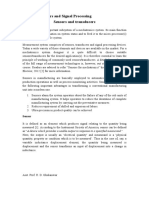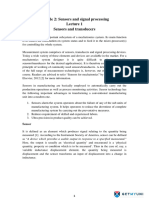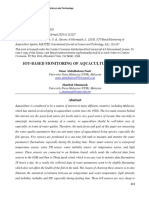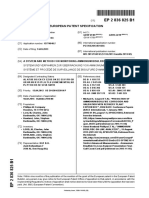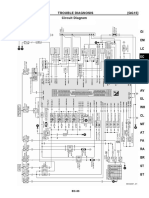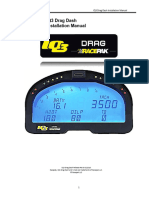0% found this document useful (0 votes)
63 views25 pagesSensing Fundamentals
This document discusses key concepts related to sensors including sensitivity, range, precision, accuracy, resolution, offset, hysteresis, response time, and more. It explains that sensors receive a stimulus and respond with an electrical signal. A transducer converts one type of energy to another. Direct sensors directly convert a stimulus to an electrical signal while complex sensors need additional transducers. The document also discusses transfer functions, regression analysis, and modeling sensor behavior using mathematical functions and differential equations.
Uploaded by
cejavierCopyright
© © All Rights Reserved
We take content rights seriously. If you suspect this is your content, claim it here.
Available Formats
Download as PDF, TXT or read online on Scribd
0% found this document useful (0 votes)
63 views25 pagesSensing Fundamentals
This document discusses key concepts related to sensors including sensitivity, range, precision, accuracy, resolution, offset, hysteresis, response time, and more. It explains that sensors receive a stimulus and respond with an electrical signal. A transducer converts one type of energy to another. Direct sensors directly convert a stimulus to an electrical signal while complex sensors need additional transducers. The document also discusses transfer functions, regression analysis, and modeling sensor behavior using mathematical functions and differential equations.
Uploaded by
cejavierCopyright
© © All Rights Reserved
We take content rights seriously. If you suspect this is your content, claim it here.
Available Formats
Download as PDF, TXT or read online on Scribd
/ 25







